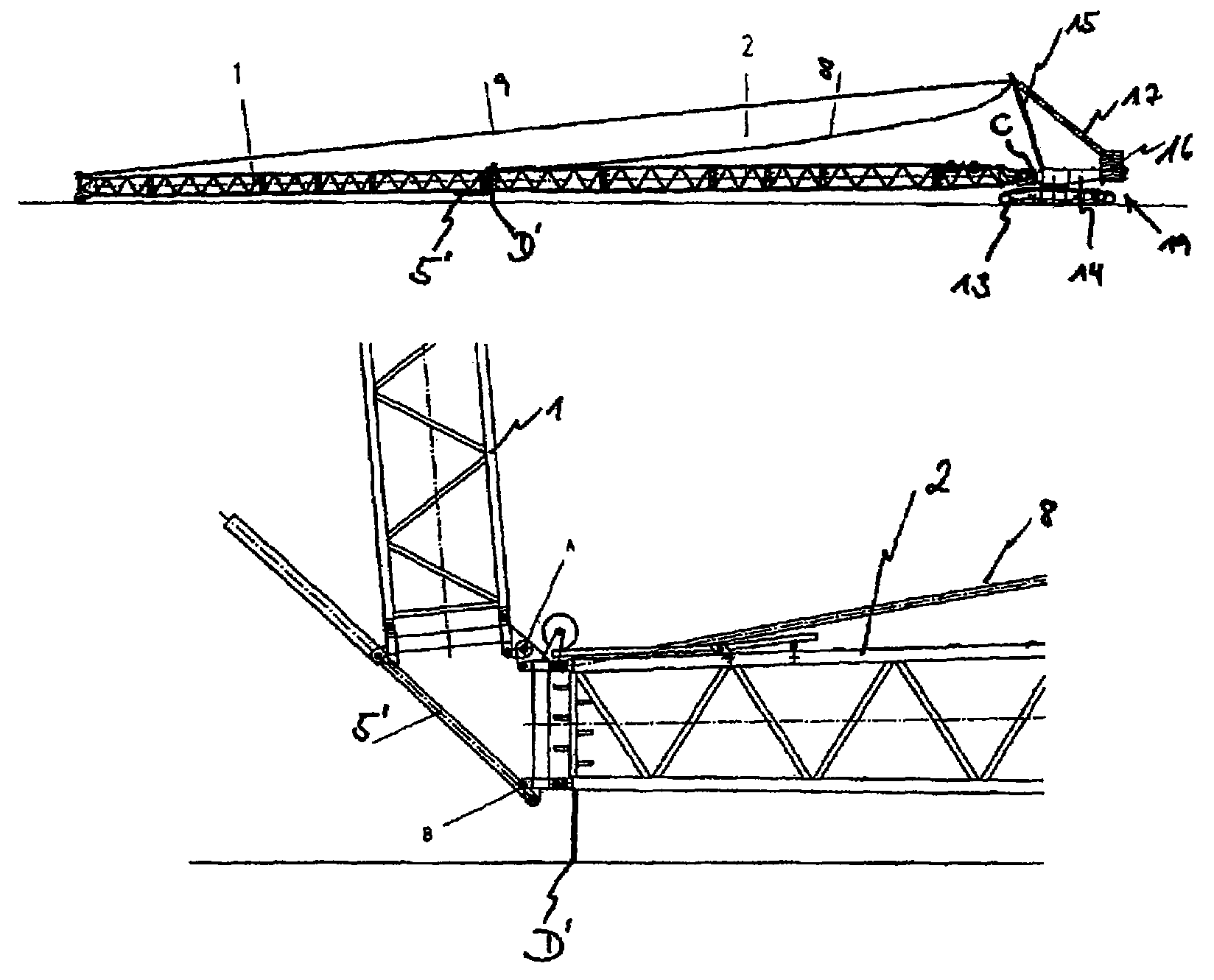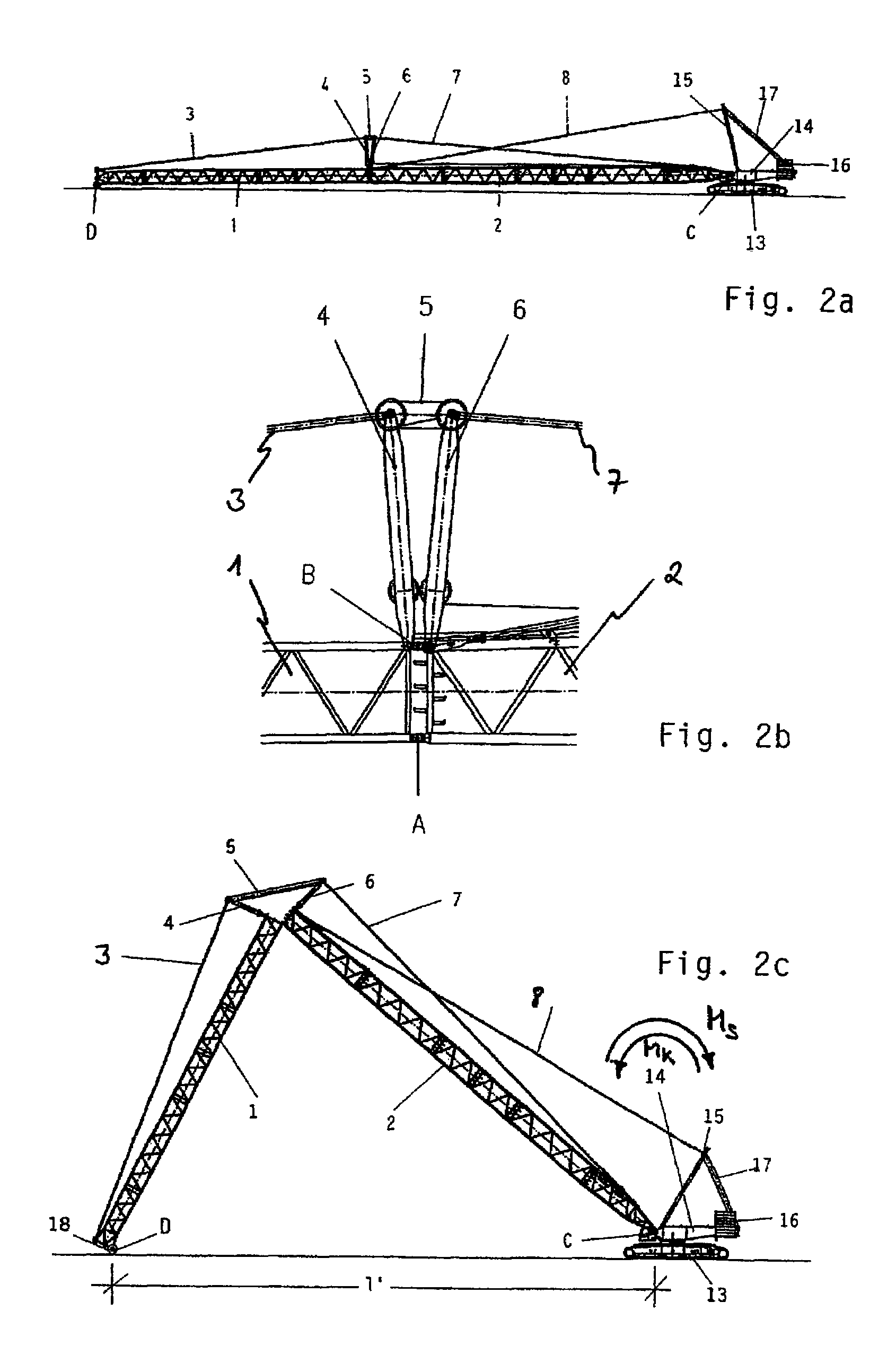Method for erecting an at least two-piece main boom for a lattice-boom crane and lattice-boom crane built accordingly
a technology of lattice-boom crane and main boom, which is applied in the direction of cranes, load-engaging elements, transportation and packaging, etc., can solve the problems of only realizing, adverse effect of jib working load, and rapid reduction
- Summary
- Abstract
- Description
- Claims
- Application Information
AI Technical Summary
Benefits of technology
Problems solved by technology
Method used
Image
Examples
Embodiment Construction
[0015]In view of the problems involved in the known methods for erecting a main boom for a lattice-boom crane, a method for erecting a main boom for a lattice-boom crane is provided according to a first aspect of the present invention, according to which the main boom can be erected without any external auxiliary means, as for example an auxiliary crane. The method is characterized in that in a first step, the main boom is aligned to its starting position, in which the main boom, which consists of a lower boom portion and an upper boom portion being jointed thereto during assembly, is supported with its lower end at a first support point on the upper carriage of the crane jointly. Further, the main boom is supported in the starting position at least on a second support point on the ground. This at least second support point can be a point of contact of the lower as well as of the upper boom portion to the ground. Naturally, also the lower as well as the upper boom portion simultaneo...
PUM
 Login to View More
Login to View More Abstract
Description
Claims
Application Information
 Login to View More
Login to View More - R&D
- Intellectual Property
- Life Sciences
- Materials
- Tech Scout
- Unparalleled Data Quality
- Higher Quality Content
- 60% Fewer Hallucinations
Browse by: Latest US Patents, China's latest patents, Technical Efficacy Thesaurus, Application Domain, Technology Topic, Popular Technical Reports.
© 2025 PatSnap. All rights reserved.Legal|Privacy policy|Modern Slavery Act Transparency Statement|Sitemap|About US| Contact US: help@patsnap.com



